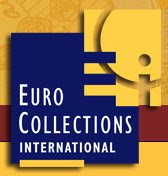
Austria 2009 100€ Archducal Crown of Austria Gold Proof
Starting in 2008 with the Holy Roman Empire Crown gold proof coin the "Crowns of the House of Habsburgs" is a five coin series that will see one coin released in November each year, with the final coin issued in 2012. All the coins will be struck to the same exacting standards of proof quality, from 16 grams of 98.6% gold on a 30.00mm flan, and featuring the intricately detailed designs the Austrian Mint are famous for.
The following information on the Archducal Crown of Austria is taken from the Austrian Mint press release.
Rudolf IV invented the title of archduke in the spurious document of 1358/59 called the privilegium maius. It was an attempt to assert the status of the House of Habsburg as the equal of any Prince Elector of the Holy Roman Empire. There exists a mediaeval portrait of Rudolf wearing a crown similar to the Archduke’s Hat. Early versions of the crown have not survived, as they were either broken up or melted down. In 1616, however, Archduke Maximilian III of Tyrol had the present Archduke’s Hat fashioned and he gave it to the Augustinian Abbey of Klosterneuburg just outside Vienna in honor of St. Leopold, whose the tomb and shrine are still situated there to this day.
The Archduke’s Crown was not worn as such. There was no coronation. It was rather a symbol of authority and rank. It was brought into Vienna only for the ceremony of homage paid by the Estates of Lower Austria on the accession of a new Habsburg ruler. The Archduke’s crown was brought in procession into Vienna, conveyed in its own sedan chair along with other pieces of regalia such as orb and sceptre. The Archduke’s crown was then presented to the new ruler and then carried in procession from the palace to St. Stephen’s Cathedral for High Mass. The crown has always been very carefully looked after and secured. Even today the crown is not permitted to be outside the walls of Klosterneuburg Abbey for more than 30 days at a time.
The obverse depicts the crown itself resting on the cushion of the federal lower states of Austria. The elaborately embroidered cushion was used for the procession of the crown in the palace, through the streets of Vienna and into to the cathedral. The Archduke’s Hat is a diadem of eight golden peaks (three of which can be seen on the coin) decorated with enamel, pearls and precious stones. Two pearl encrusted arches hold a sapphire mounted by a cross at their intersection. In the crown itself is a red velvet cap and the diadem is surrounded with a circle of ermine. Around the top inside edge of this coin is the country of issue, “Republk Oesterreich” (Republic of Austria.) The face value, 100 euros, and the year of issue, 2009, are located on the left side of the obverse. Along the inside of the lower rim of the coin are the words “Oesterreichischer Erzherzogshut”, Austrian Archduke’s Hat.
The reverse of the coin depicts the solemn ceremonial procession. Three high-ranking officials of the Lower Austrian Estates carry the crown, the orb and the sceptre, in that order, along the centrally located street called the Graben, from the palace to the cathedral. The officials are wearing court finery, including the tall wigs known as periwigs from about the early 1700’s. Soldiers wearing tricorner uniform hats line the streets while a serious drumbeat is sounded as accompaniment. In the upper right side of the reverse the intricate Baroque monument in memory the ravishes of the plaque can be seen. This memorial column was erected in 1692 and can still be viewed today in the same location along the Graben. In the left upper quadrant of the coin are the fine homes, usually with shops on the ground level, typical of this time, many of which remain today.
| The new 100 Euro gold coin designed by Mint engraver Helmut Andexlinger is struck in proof quality (reverse frosting) with a maximum mintage of 30,000 pieces. Each coin is encapsulated and comes in a box with a numbered certificate of authenticity. A unique lapel pin plated with gold and bearing a miniature version of the Archducal Crown also accompanies the gold coin. |  |
Also available is the first coin in this series, dedicated to the Crown of the Holy Roman Empire, as well as the official Crowns Of The House of Habsburgs Collection Case





No comments:
Post a Comment